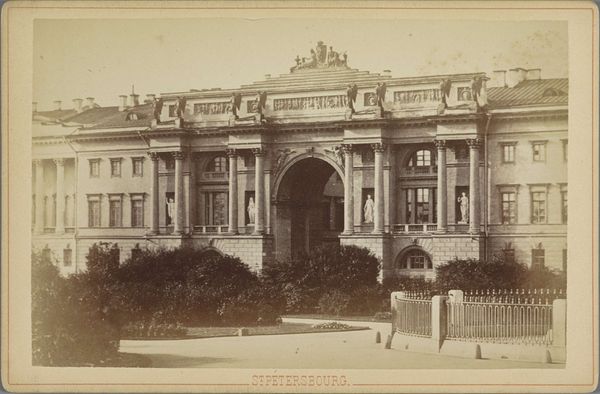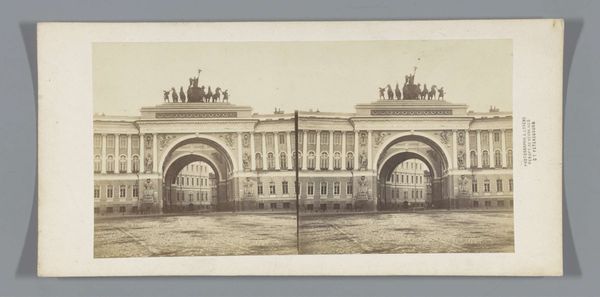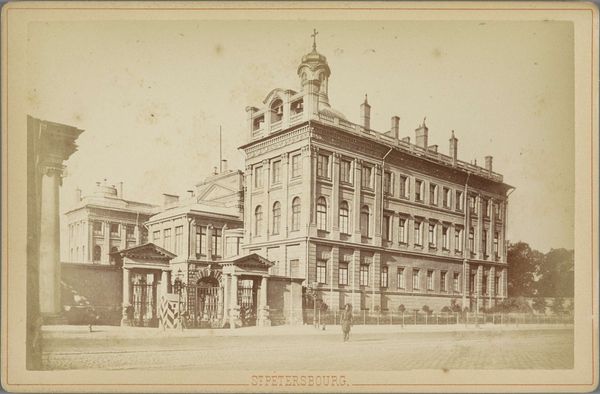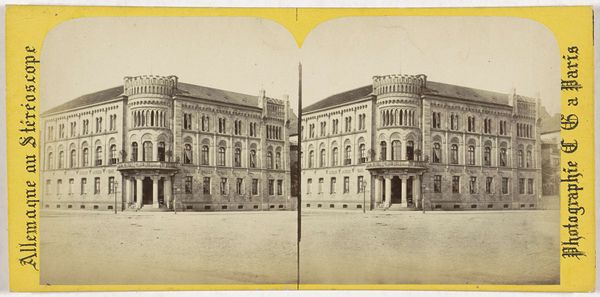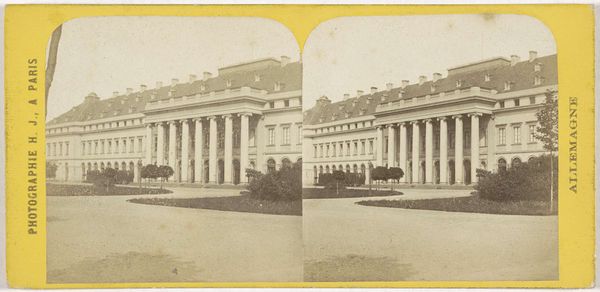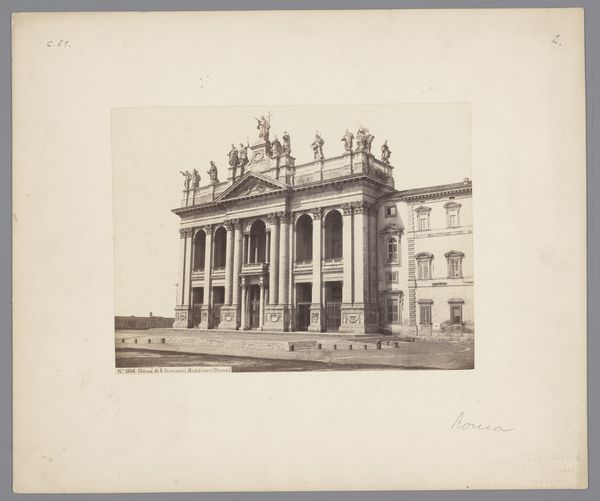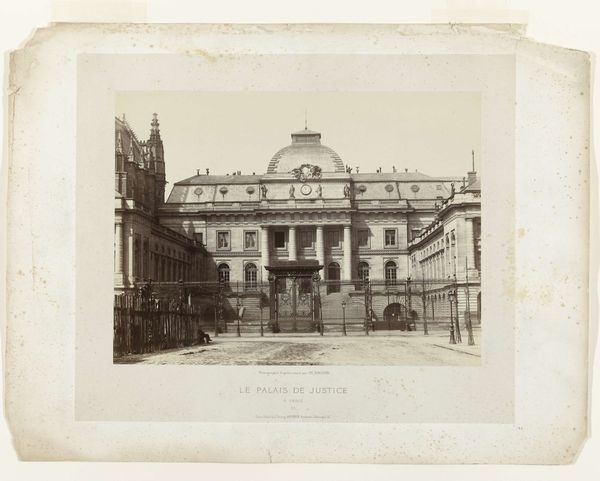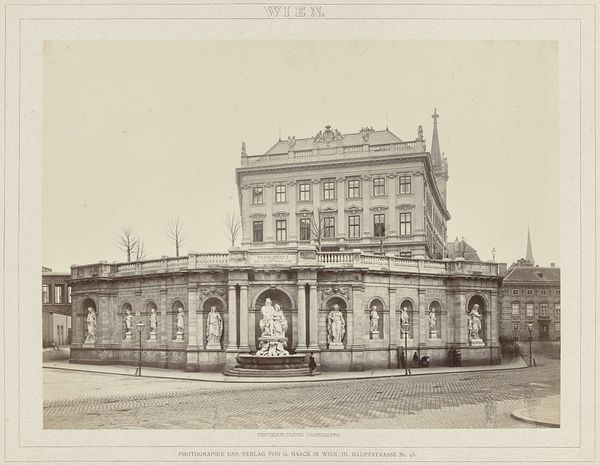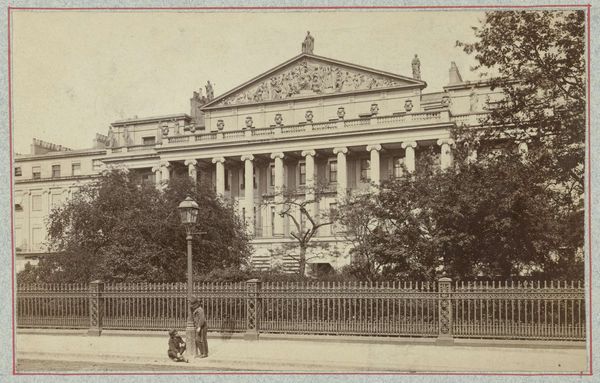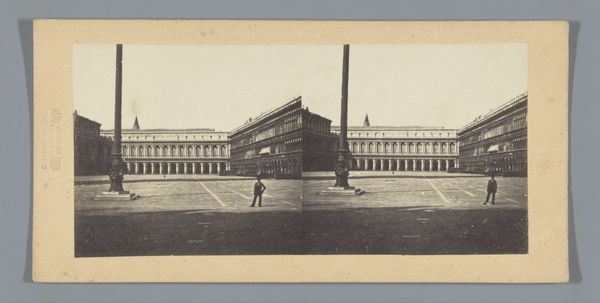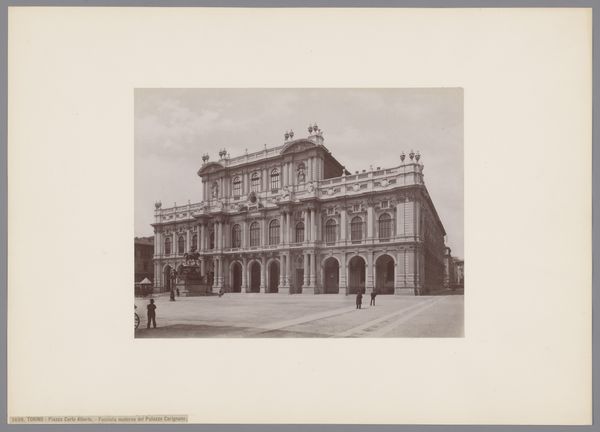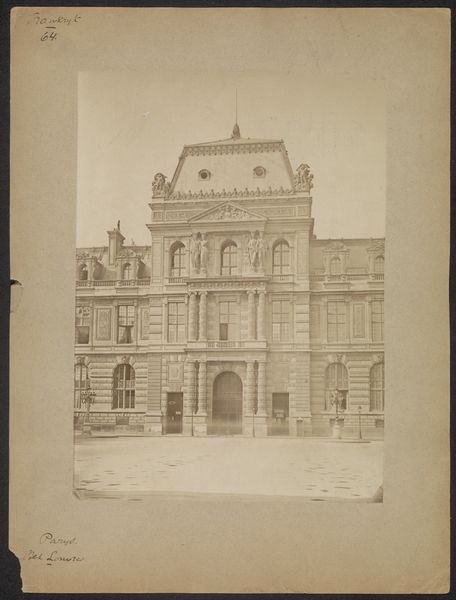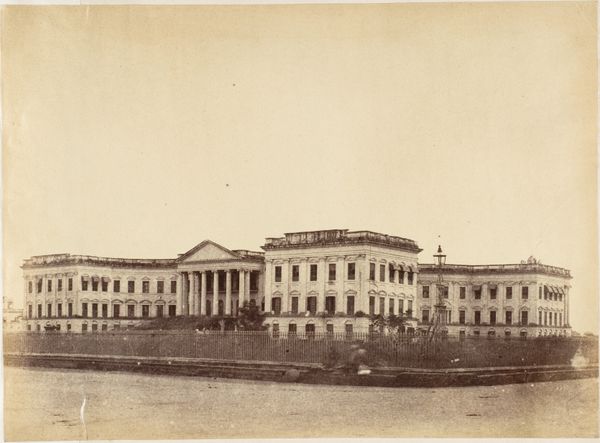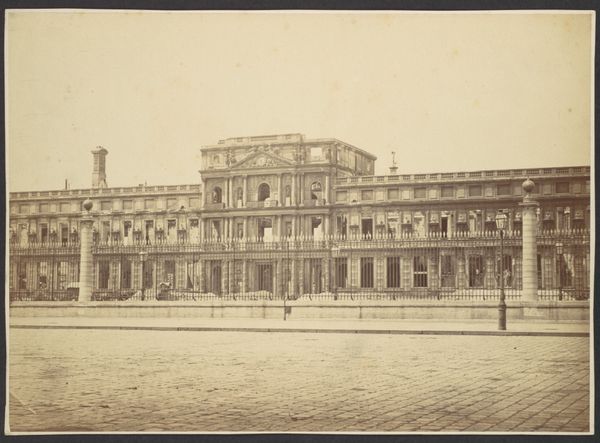
Toegangspoort tot het gebouw van de Generale Staf in Sint-Petersburg met strijdwagen c. 1880 - 1900
0:00
0:00
print, photography, architecture
#
16_19th-century
# print
#
photography
#
coloured pencil
#
19th century
#
cityscape
#
watercolour illustration
#
architecture
Dimensions: height 92 mm, width 150 mm
Copyright: Rijks Museum: Open Domain
Curator: This albumen print, likely dating from around 1880 to 1900, presents the entrance to the General Staff Building in St. Petersburg, adorned with a triumphant chariot. The photographer is known as J. Daziaro. Editor: Wow, the scale! Even in this image, you feel dwarfed. The archway is like a mouth, ready to swallow you into history. There's an echo of power radiating off the whole scene, amplified by that chariot poised at the top. Curator: Precisely. The chariot, of course, isn't merely decorative. It's a powerful symbol. Think of the Roman triumphs; this imagery echoes that, conveying imperial authority and military strength. It visually links Russia to the grandeur of past empires. Editor: I see that connection! And the sepia tone…it makes the scene feel almost like a memory. It's grand, yet tinged with the distance of time. It invites reflection, rather than pure awe. Makes you wonder about the weight of all that history bearing down. Curator: The building itself reinforces that. Notice the architectural vocabulary borrowed from classical forms, like the columns and the statuary. These elements are carefully employed to project permanence and stability. They visually claim a cultural legacy. Editor: But it’s interesting how photography itself plays a part here. It’s almost…conflicting. The sharp detail gives it a hyper-real quality, while the antique process blurs those crisp lines, pulling you into an elusive world between dream and document. It creates tension. Curator: The photograph captures a moment in time and transcends it. The artist employs architectural iconography, reinforcing enduring power structures of 19th-century Russia while paradoxically freezing its image as something receding in the past. Editor: A powerful convergence indeed, making us think about lasting legacies, faded memories, and everything in-between. Curator: It provides a snapshot of how imperial power represented itself at a crucial moment in time, and of how our own interpretations are always subject to change.
Comments
No comments
Be the first to comment and join the conversation on the ultimate creative platform.
